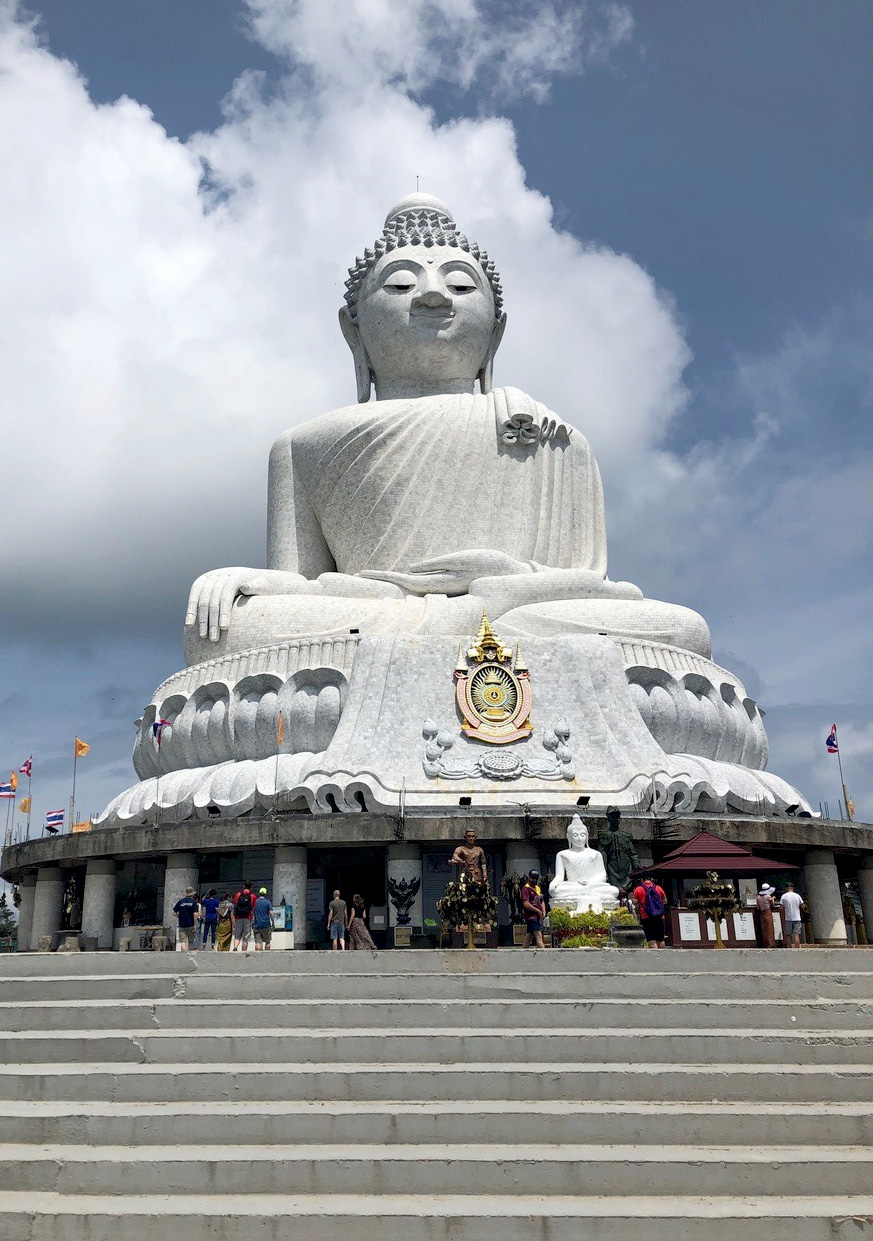
A recent family adventure took me to Phuket’s Big Buddha. As the name suggests, this marvel is a giant Buddha stretching 45 metres into the sky, overlooking the Andaman Sea. One of the top tourist sites on the island, the Buddha sits peacefully on his mountaintop, his white Burmese jade marble body glinting in the sun.
Explanatory signs in Thai and English are sprinkled around the Buddha and temple. As I explored, I was confused by a sign beside a pile of shoes: “Do not going on to the Buddha’s seat.” The shoes hinted that the sign might be a reminder for visitors to remove their shoes. But it was next to some smaller Buddha statues. Maybe it was a direction not to hop on to their cushions for a photo op? I had to wonder why they hadn’t hired an editor. Surely spending a few baht on checking signs would go a long way in helping English speakers understand where to remove shoes and where not to sit. I’ve always been a fan of great examples of misspelled signs, but this one left me perplexed.
Wandering on, I came across donation requests for individual pieces of marble to cover the temple’s stairs. While the concrete Buddha is completely covered in marble, the staircase leading up to him is still bare. The temple has been under construction for years as its funding is donation dependent. As I looked at the size of the staircase and estimated the number of marble squares it needed, I understood the magnitude and cost of the task.
…the Big Buddha made me question my belief.
Of course they didn’t hire an editor! Communication is so important, but what use is clear signage if a landmark is incomplete? When is bringing in an editor a financially responsible choice, and when is it an extra? I’ve always considered proper spelling and grammar to be necessary pieces of any communication, but the Big Buddha made me question my belief.
At the end of our exploration, my mother and I were blessed by a monk who shook water over our heads and tied bright twine bracelets around our wrists. He then asked where we were from. When we answered Canada, he pulled out his iPad. Whether to make a note of our backgrounds or to check the time, I’m not sure. He was soon replaced by another monk; his blessing shift was over.
For me, the Big Buddha brought together cultures and languages, the traditional and the modern. It made me realize how important it is to step away from our desks and take some space, and approach our craft from a different point of view. Before my trip, I would have argued that an editor is always necessary; I now think it’s more nuanced than that.
If the Big Buddha team decides to refresh their signs when the construction is finished, I’d be back to help in a heartbeat. In the meantime, I’ll stay curious and be more open to the circumstances behind spelling mistakes on signs.
Previous post from Marianne Grier: Editing: An Essentialist Craft?
The Editors’ Weekly is the official blog of Editors Canada. Contact Us.
Discover more from The Editors' Weekly
Subscribe to get the latest posts sent to your email.
